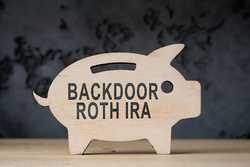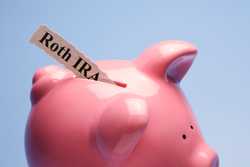401(k) Matching: Meaning, How It Works, and How to Get the Most Out of It


Our evaluations and opinions are not influenced by our advertising relationships, but we may earn a commission from our partners’ links. This content is created by TIME Stamped, under TIME’s direction and produced in accordance with TIME’s editorial guidelines and overseen by TIME’s editorial staff. Learn more about it.
When a company offers a 401(k) retirement plan to its employees, 401(k) matching is an employer’s contribution to an employee participant’s account. This matching amount is in addition to the salary deferral contributions made by employees each pay period. Matching contributions are sometimes referred to as free money because they are made by the plan sponsor directly to your account.
There are several 401(k) matching formulas that may be used by an employer. One thing all of these formulas have in common is that they help enhance your retirement savings efforts through your 401(k) plan.
Looking for financial advice regarding your retirement accounts? Consult with Empower's team of experts
The specific terms of the 401(k) match can vary a bit from plan to plan. However, the matching process must adhere to the rules set forth by the Employee Retirement Income Security Act (ERISA), which is enforced by the Department of Labor (DOL).
An employer 401(k) match is an additional contribution to your account made by your employer over and above your own contribution. Matching contributions are made to your account as often as each pay period, at varying intervals, or once per year. The frequency of the deposits will depend on the matching formula and the type of matching involved.
Your ability to take the matching contributions with you if you leave that employer will depend upon whether or not you are vested in the matching contributions. Vesting refers to your ownership of your employer’s matching and other contributions to your account. It generally is tied to a period of employment with the company, though some types of matching contributions are immediately vested.
There are a number of different 401(k) matching contribution formulas. Here are four.
A partial 401(k) match is a common formula that involves an employer matching a percentage of an employee’s contributions. A typical partial matching formula would be a 50% match on employee contributions up to the first 6% of their salary contributed. There is a maximum limit to the amount an employer contributes.
For example, if an employee earns $75,000 annually, then a 50% match on the first 6% of their salary would be $2,250 ($75,000 times 6% divided by 2). If the employee contributes at least 6% of their salary to the plan, this is the maximum match they would receive under this formula.
Dollar-for-dollar matching means that the employer will match employee salary deferral contributions in full up to a set limit. For example, if the employer matches employee contributions dollar-for-dollar up to 4% of their salary, this means that the employer will match each dollar of employee contributions up to that amount.
If the employee contributes 4% of their compensation, then the employer will match 100% of their contribution. If they contribute 2% of their compensation, then the employer will match the full 2% they contributed.
However, if an employee contributes 7% of their salary to the plan, in this case the employer’s matching contribution will be capped at 4%.
Empower is a firm that can help you sort out the impact of employer matching and all of your own plan contributions on your retirement savings.
Profit-sharing contributions are made by employers to all employees regardless of whether they participate in a company 401(k) plan and regardless of how much they contribute to the plan. An employer generally uses profit sharing to reward all employees based on how well the company did during the year. This might be driven by the company’s growth in revenue, profitability, or a combination of business metrics.
Plan participants are then free to invest profit-sharing contributions among the investment options available within the 401(k) plan, which are the same options they choose for their ongoing salary-deferral contributions.
Nonelective contributions are technically not matching contributions, but they are another form of employer contributions. They are similar to profit-sharing contributions in that employees receive these contributions whether or not they contribute to the plan, and regardless of the amount they contribute if they do participate.
A common example of a nonelective contribution can occur when there is a danger of a plan failing its nondiscrimination testing. Among other things, this could reduce the amount that highly compensated employees may contribute to the plan.
One remedy to correct this discrepancy is for the plan to make qualified nonelective contributions to non-highly compensated employees. These contributions are made to these employees regardless of whether or how much they contribute to the plan.
To ensure that their company avoids problems with annual nondiscrimination testing, some business owners may elect to use a Safe Harbor 401(k) plan. With this type of 401(k), employers have a choice of giving every eligible employee a 3% nonelective contribution or a 4% matching contribution made up of a 100% match on the first 3% contributed plus a 50% match on the next 4% and 5% contributed, making an 80% match on the first 5% of salary contributed for eligible employees.
Additionally, all employer contributions must be immediately vested under a Safe Harbor 401(k).
Prior to the passage of the SECURE 2.0 Act of 2022, employer matching and nonelective contributions related to a participant's Roth 401(k) account were required to be made to a traditional 401(k) account.
Thanks to the new legislation, employers are now allowed to make matching contributions to a participant’s Roth 401(k) account. As a practical matter, not all employer plans offering the Roth 401(k) option will be implementing this immediately as many plans may need to make plan changes and/or administrative changes to accommodate this rule change.
Each year there is a combined maximum level of employee and employer contributions that can be made on behalf of each employee.
For 2024 the maximum combined contribution level is $69,000 ($76,500 for employees who are 50 or over at any point during the plan year). The first part of this limit is the employee deferral limit, which is $23,000 (plus an additional catch-up contribution for participants who are age 50 or over, bringing that group’s total deferral amount to $30,500 for 2024).
The difference of $46,000 can consist of employer matching contributions and non-matching contributions such as profit sharing. Not every employer will contribute this much, but this is the maximum for 2024.
For 2025, the maximum combined contribution level is $70,000 ($77,500 for 50 and over). What's more, starting in 2025, employees who are ages 60 through 63 get a special, higher catchup contribution. For 2025, the amount is $11,250, rather than the $7,500 everyone else who is 50 or older receives. Their maximum at those four ages is $81,250.
The vesting schedule in your employer’s 401(k) plan dictates the level of ownership of employer matching contributions that you have at any point in time. This is important should you decide to leave the employer, or if you are terminated from employment.
You are always fully vested in your own contributions to the plan. In some cases you may be immediately vested in employer contributions. Many employers, however, choose a gradual vesting schedule, based on years of service. There are several options.
One example is a graded vesting schedule:
| Years of service | Percent vested |
|---|---|
1 | 0% |
2 | 20% |
3 | 40% |
4 | 60% |
5 | 80% |
6 | 100% |
The chart above shows the maximum amount of time an employer can specify for full vesting in their matching contributions. While the graded vesting schedule cannot be more restrictive than this, the employer may make it less restrictive allowing full vesting sooner than after the completion of six years of service with the company.
Another type of vesting is cliff vesting, which looks like this:
| Years of service | Percent vested |
|---|---|
1 | 0% |
2 | 0% |
3 | 100% |
The participant has no vesting in their employer’s contributions during their first two years of employment, but they are fully vested in the employer contributions at the end of three years under this arrangement. Again the employer can use a less restrictive cliff vesting schedule, but not one that is more restrictive.
Some situations require a plan to fully vest participants in their employer contributions, even when other rules would otherwise apply. These include:
Many of us will work for several employers over the course of our working careers. It can be easy sometimes to lose track of an old 401(k) plan. Beagle is a service that can help you track down an old plan to be sure you reap the benefits of these retirement savings.
If the employer matching or non-matching contribution is made to the participant’s traditional 401(k) account, the employer contributions will be taxed in the same way as the employee’s contributions to the plan. For example, employer contributions will be taxed when they are withdrawn from a traditional 401(k) plan or are rolled over to a subsequent Roth IRA.
However, if employer contributions are rolled over in a direct rollover to a traditional IRA—or to another employer’s 401(k) plan when the employee leaves the company—they will not be taxed until they are withdrawn at a later time. An early withdrawal penalty can apply if the employer contributions are withdrawn prior to age 59½. You may be exempt under specified conditions, such as what’s known as the rule of 55.
Just as with your own traditional 401(k) contributions, the employer contributions to your account grow tax-deferred until withdrawn.
With the Secure 2.0 rules allowing employer matching into a Roth 401(k) account, these matching contributions will be made on an after-tax basis in the year received, much like employee contributions to a designated Roth 401(k). These contributions will be eligible for tax-free withdrawals in the future, just like money contributed to a Roth 401(k), if certain requirements are met. Playbook would be an excellent option to help you optimize your retirement savings and tax planning strategies.
There are several ways to help maximize your employer 401(k) match.
Some plans may allow you to begin contributing as soon as you start as an employee; others may impose a waiting period. Be sure to understand the rules for your employer’s plan and begin contributing as soon as you are eligible. Waiting to contribute beyond this date will cause you to lose out on any employer matching contributions you may have been eligible for during that time frame.
Make sure you understand the plan’s matching formula. For example, if your employer matches 50% on the dollar up to the first 6% of your salary that you contribute to the plan, be sure to contribute at least 6% of your salary in order to receive the full employer match. Matching contributions are akin to free money. Don’t leave any of this money on the table if you can avoid doing so.
Some plans have a default minimum contribution level for employees who don’t make an affirmative contribution election. This minimum contribution level will often be below the level needed to receive the full amount of the employer match. If possible, contribute at a level that is at least enough to receive the full employer match.
Most plans require that you have your contributions taken from your paycheck automatically each pay period. If this is only optional, be sure to elect this option. It is always easier to make contributions if they are taken from your check automatically versus having to do something to make the contributions. This will result in regular contributions and also ensure that you don’t miss out on any employer matching.
A 401(k) match is an important feature of 401(k) plans that offer them. This is additional “free money” that your employer is providing to help increase your savings for retirement. This money can be invested for growth until retirement. It is a plan feature you should take full advantage of, if offered.
A 6% employer match in a 401(k) means that the employer will provide a match for up to the first 6% of your annual compensation that you contribute to the plan. For example, if you earn $60,000 annually, the first 6% would be $3,600. Any matching would be made on up to $3,600 in employee contributions.
The match would be made in accordance with the plan’s matching formula. This might be 50% of the first 6%, or a maximum of $1,800 in this case. The matching formula might be dollar-for-dollar, meaning the full match would be $3,600.
Profit-sharing contributions are made to all eligible employees whether or not they are contributing to the 401(k) plan—or regardless of how much they contribute if they are making contributions.
The employer match, including non-matching contributions such as profit sharing, does not count against the annual employee contribution limit for a 401(k). For 2024, these limits are $23,000, plus a $7,500 catch-up contribution for those who are 50 or over. This brings the total contribution limit to $30,500 for those who are at least 50.
There is a combined total annual limit that includes both employee and employer contributions. For 2024 this limit is $69,000 ($76,500 for participants who are 50 or older).
The information presented here is created by TIME Stamped and overseen by TIME editorial staff. To learn more, see our About Us page.



